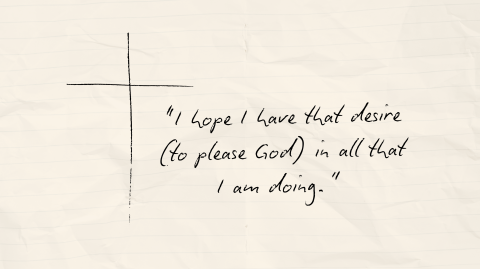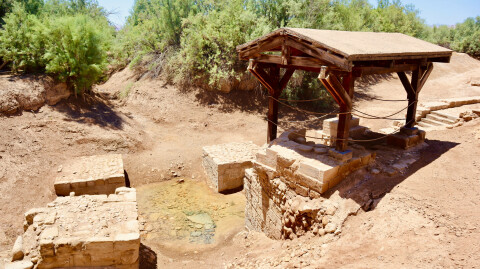TLDR: The author compares the similarities and dissimilarities of the two Creation narratives of Genesis. He ends with an invitation to open the Bible and get lost in its many fascinating stories. Read on for more.
The two creation narratives in the book of Genesis are quite different one from the other. You may be asking, “What? There are two creation narratives in Genesis?” Well, lucky for you, I am here to inform and educate. The first narrative goes from chapters 1:1 to 2:4a. The second narrative starts at 2:4b and ends at 3:24. Let me briefly review the differences between the two narratives:
|
CREATION ONE Genesis 1:1-2:4a |
CREATION TWO Genesis 2:4b-3:24 |
|---|---|
|
Creation in seven days A. Light to separate day from night B. Separation of waters to create the sky C. Gathering of waters on earth to separate oceans and rivers from dry ground. Then vegetation, including plants yielding seed. D. Creation of the Sun, Moon, and Stars E. Living creatures populate the oceans and rivers and birds populate the skies F. Creation of animals to populate the earth and of humanity to have dominion over everything created. G. God orders the Sabbath |
Creation in one day: “In that day that the LORD created the earth and the heavens… the Lord God formed man from the dust of the ground…” |
|
Humanity is the center piece of creation whom God creates together at the very same time, “So God created humankind in his image, in the image of God he created them, male and female he created them.” |
Adam is the center piece of creation This is a staged approach. Man is created first from the dust of the ground, and God planted a garden for him. Then God created all trees, including the trees of wisdom and life. God placed man in the garden and commanded him not to eat from the tree of the knowledge of good and evil. God realized that man was lonely, so he formed all animals of air, earth, and ocean and gave man the ability to name them. But man was still lonely. So God caused the man to fall asleep and formed a wife for man from one of his ribs. Man then names this creature like him. |
|
Formulas This narrative has well-known formulas we recognize easily: “God said… So God created… And God saw that it was good or God blessed…” This narrative also has the famous formula “Be fruitful and multiply, and fill the earth” which is first commanded of the animals, then of humanity, and later of Noah’s family after the flood. |
Formula No discernible formula, but the origin of the mandate that creates the biblical pattern for all marriages, “Therefore a man leaves his father and his mother and clings to his wife, and they become one flesh.” |
|
The Garden Not mentioned at all in this creation narrative |
The Garden Described in great detail: a. The Lord Planted a garden in Eden b. The Lord placed man in it c. The Lord caused to grow every tree that is pleasant d. God placed the trees of life and of knowledge in the center of the garden e. God created a river to water the garden f. The great river divides to create four tributaries: Pishon, Gihon, Tigris, and Euphrates. |
|
Mandate not to eat of a tree Not mentioned at all in this narrative |
Mandate not to eat of a tree Mentioned by God to the man, no record of God saying it to the woman, but she certainly knows about this rule. |
|
A snake in the garden Not mentioned at all |
A snake in the garden Becomes one of the central characters of Genesis 3. It tempts the woman and her husband to break God’s command. It causes humanity to be expelled from Eden. |
|
Humanity expelled from Eden Not mentioned in this narrative |
Humanity expelled from Eden The central conflict of Chapter 3. This narrative answers the question, “How did sin enter the world?” |
|
SABBATH This is the central theme of the seventh day creation narrative. Everything points to this holy command, central to Judaism. This narrative answers the question, “How did the Sabbath become one of the most holy commands of Judaism? |
SABBATH Not mentioned in this narrative |
You may have a question, “Why two?” This is a good question, and the answer is that we could have had more than two. By the time Gensis was composed, there were many Creation narratives circulating in various parts of the world. We know that Genesis draws inspiration from an Old Babylonian story called the Atrahasis Epic, as well as an Egyptian story known as the Gilgamesh Epic. What Genesis does very creatively is that it reinterprets these existing narratives from a theological point of view, moving from polytheism to monotheism, from weak and capricious gods to an Almighty God, from humanity as a minor player and sideline project of the gods to humanity as central to God’s creation, from humans as providing food for the gods to God providing and protecting humanity, from amorphous humanity to humanity made in the very image of God, and from creation out of necessity to creation out of love. In these ways, Genesis is peculiar and holy.
This brief musing on Genesis is meant to inspire you to pick up your Bible and find the many fascinating rabbit trails you seldom hear in sermons or Bible studies. There is a richness to God’s Word that is seldom explored in Episcopal churches and I believe this impoverishes us.
Happy digging,
Fr. Roman+





